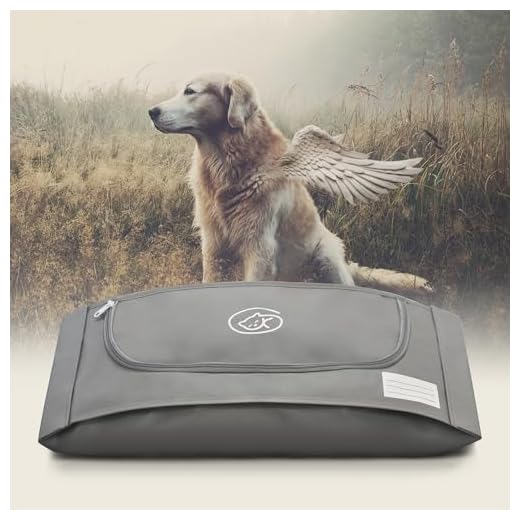




It’s a question that weighs heavily on many hearts: what sensations accompany the moment of farewell for our beloved companions? Research indicates that the process can be peaceful, reducing anxiety through sedation. Administering a calming agent before the final act allows for a serene transition, minimising distress. Many pet owners report a sense of relief knowing their furry friends can depart without fear or pain.
Observations from veterinarians suggest that animals often exhibit a sense of calm as they drift away. The environment plays a significant role; familiar settings and the presence of loved ones can create a comforting atmosphere. Owners often share stories of their pets resting their heads or leaning into them, a sign of trust and love in those final moments.
Paying attention to individual behaviour is crucial. Some may exhibit signs of anxiety, while others may seem to accept the situation with grace. Providing a tranquil space, surrounded by familiar scents and voices, can greatly influence the experience. Each farewell is unique, shaped by the bond shared, and understanding this can help in making the right decisions during such a difficult time.
Understanding the Experience of Euthanasia in Canines
Numerous studies indicate that the process of euthanasia is designed to be as calm and painless as possible. Most professionals use a sedative before administering the final injection, which helps to alleviate anxiety and provides comfort. This means that the animal likely enters a tranquil state prior to the procedure.
Physical Reactions
- The heart rate typically slows down.
- Respiration becomes more shallow.
- Muscle relaxation occurs, leading to a peaceful appearance.
These physiological changes suggest a state of ease rather than distress. Observing these signs can provide reassurance to pet owners, knowing that their beloved companion is not suffering during this time.
Emotional Considerations
- Canines may exhibit signs of recognition and familiarity with their owners, creating a comforting atmosphere.
- Many pet owners choose to stay close, providing a sense of safety and love.
- The presence of familiar voices and gentle touch can further enhance this environment.
Such emotional connections can make the experience more serene for both the companion and the owner. It is crucial to focus on creating a peaceful setting, ensuring that the final moments are filled with warmth and compassion.
Understanding the Euthanasia Process in Dogs
In this sensitive situation, clarity about the euthanasia procedure is crucial. The process typically begins with a consultation with a veterinarian, where all aspects, including the pet’s health condition and quality of life, are discussed. This dialogue helps owners make informed choices aligned with their beloved companion’s needs.
The Procedure Itself
Once a decision is reached, the actual administration involves a tranquiliser, followed by an overdose of anaesthetic. The tranquiliser ensures a calm state, minimising stress before the final injection. This aspect is essential; many owners appreciate knowing that their furry friend will be in a serene environment, surrounded by loving individuals.
Aftercare and Support
Post-procedure, options for aftercare, such as burial or cremation, are available. Many veterinary clinics offer grief support resources, recognising the emotional toll this experience can take on pet owners. Engaging with these resources can help in processing the loss and honouring the cherished memories shared.
Understanding these steps provides a sense of control during an overwhelming time. It’s important to remember that this decision, while heart-wrenching, is often made out of love and compassion for a companion’s well-being.
Physiological Responses of Dogs During Euthanasia
During the euthanasia process, observant pet owners may notice specific physiological responses that indicate the body’s reaction to this procedure. Initially, a tranquiliser may be administered, leading to a noticeable relaxation of the muscles. This relaxation can often be seen as the animal becomes less tense, allowing for a more peaceful transition.
The heart rate typically decreases as sedatives take effect. This gradual decline is an important aspect, as it suggests the animal’s body is entering a state of calm. Monitoring heart rate and respiratory patterns is essential during this time to ensure comfort and ease.
As the process continues, the administration of an overdose of anesthetic agents results in a rapid and profound impact on the central nervous system. Blood pressure may drop significantly, which is a natural response to the medications used. Observing this can be distressing, yet it is a part of the intended outcome, ensuring that the animal does not experience distress.
In the final moments, breathing may become irregular or slow before ceasing altogether. This process should be as gentle as possible. Caregivers often report a serene expression on the animal’s face, indicating a sense of tranquillity and absence of pain.
Post-euthanasia, it is common for the body to become cool to the touch as circulation stops. The absence of reflex actions, such as the blink reflex, serves as a clear indication that consciousness has faded. Understanding these physiological changes can provide comfort to those who must make the difficult decision to end their pet’s life.
Being informed about these responses helps to alleviate some anxiety surrounding the procedure, allowing owners to focus on creating a peaceful environment during this sensitive time.
Emotional Responses of Dogs: What the Research Says
Research indicates that these animals exhibit a range of emotional reactions, particularly in challenging situations. Observations reveal that there’s a notable connection between their behaviour and emotional state, especially during stressful moments.
Key Findings on Emotional Awareness
Studies suggest that canines can recognise human emotions and respond accordingly. For instance, a dog may sense sadness in its owner and display comforting behaviours. This emotional intelligence is believed to stem from their long history as companions to humans, fostering a deep bond that enhances their sensitivity to our feelings.
Impact of Environment on Emotional State
The surroundings and the presence of familiar individuals significantly affect their emotional well-being. A calm environment can help mitigate anxiety, while a stressful atmosphere may exacerbate feelings of fear or distress. Understanding these dynamics can aid in providing comfort during difficult times.
| Emotion | Behavioural Signs | Recommended Action |
|---|---|---|
| Anxiety | Pacing, whining, hiding | Provide a safe space and soothing presence |
| Happiness | Wagging tail, playful behaviour | Engage in playtime and positive reinforcement |
| Fear | Trembling, avoidance | Use calming techniques and distraction |
For those caring for Shih Tzus, choosing the right nutrition is essential. Quality food, such as best canned dog food for shih tzu, can positively influence their emotional and physical health. A well-nourished companion is generally more resilient and better able to cope with emotional stress.
The Role of Veterinarians in Ensuring a Peaceful Passing
Veterinarians play a pivotal role in guiding pet owners through the challenging process of euthanasia. Their expertise ensures that the transition is as serene as possible for both the companion and the owner. One key recommendation is to choose a veterinarian who prioritises compassionate care and has experience in end-of-life procedures. This choice can make a significant difference in the overall experience.
During this difficult time, vets often provide detailed explanations of the procedure, allowing pet owners to understand what to expect. A tranquil environment is also essential. Many clinics offer private rooms where the process can take place away from the hustle and bustle of the main clinic, fostering a calming atmosphere. Owners should feel comfortable discussing their wishes for the farewell, including the option for home euthanasia, which can be less stressful for both parties.
In addition, veterinarians often use a combination of medications to minimise discomfort. The initial sedative allows the companion to relax deeply before the final injection. This practice helps ensure that the experience is as gentle as possible. It’s vital for pet owners to communicate openly with their veterinarian about any concerns or questions they may have. This dialogue can help in tailoring the experience to suit both the pet’s needs and the owner’s emotional state.
Finally, emotional support is a significant aspect of a veterinarian’s role. Many professionals are trained in grief counselling and can provide resources for coping with loss. This additional layer of care can help owners navigate the complex emotions that accompany saying goodbye to a cherished companion.
How Owners Can Support Their Pets Emotionally
Spend quality time together. Create a calm and loving atmosphere by sitting with your furry friend, stroking their fur, and speaking softly. This presence can be incredibly comforting during tough moments.
Maintain routines. Familiar activities like feeding, walking, and playtime contribute to a sense of stability. Keep these rituals consistent to help your companion feel secure.
Use soothing sounds. Soft music or gentle nature sounds can ease anxiety. I often play calming tunes for my pet, and I’ve noticed how it helps create a peaceful environment.
Offer treats and favourite toys. Small acts of kindness, like sharing beloved snacks, can bring joy. It’s amazing how a simple snack can brighten their day and provide comfort.
Involve veterinary staff. Discuss your concerns with your vet. They can offer valuable advice on how to ease emotional distress and can help ensure your pet’s comfort during challenging times.
Consider gradual goodbyes. If you know the time is near, spend extra moments together. Reflect on happy memories and share those feelings. It can be a beautiful way to honour your bond.
Document memories. Create a scrapbook or photo album. This act of preserving memories can provide comfort and serve as a reminder of the love shared, creating a positive focus during difficult times.
Connect with support groups. Engaging with other pet owners can provide emotional relief. Sharing experiences and feelings helps process the journey together.
Practice self-care. Remember your well-being is important too. Take breaks, speak to friends, or engage in activities that refresh your spirit. A balanced mindset allows you to support your companion better.








